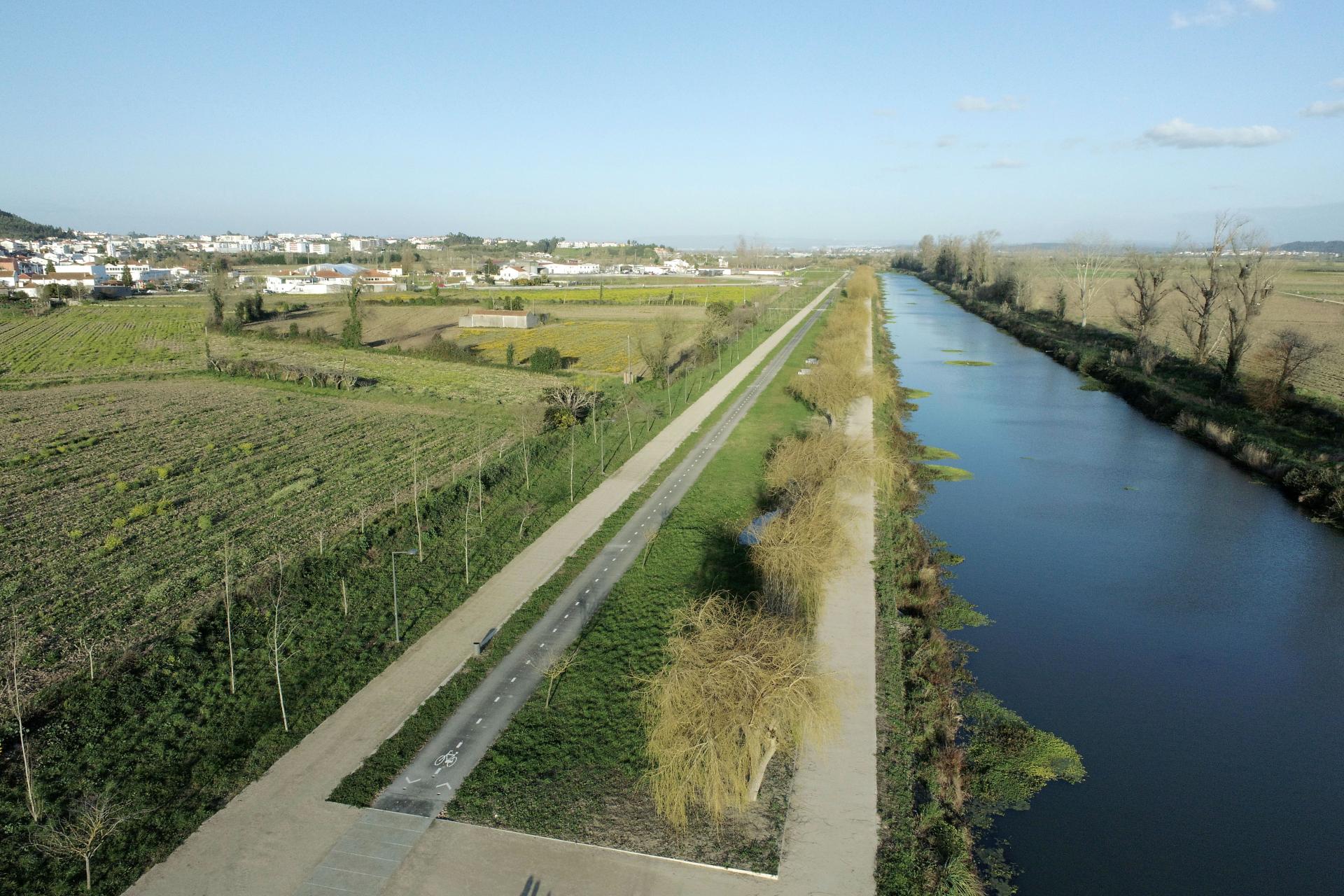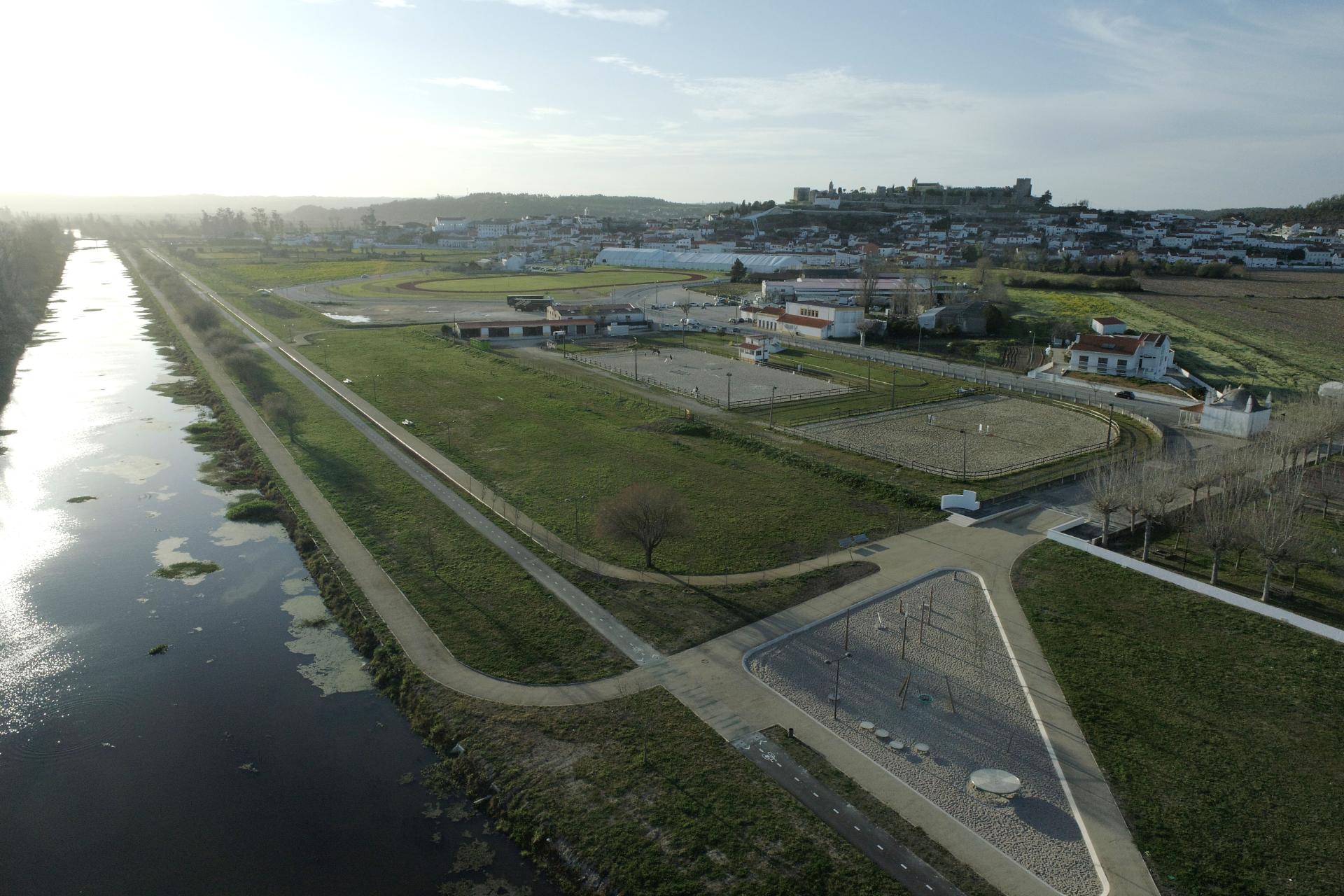PARU 1 – Riverside Urban Park – phase 1
Basic information
Project Title
Full project title
Category
Project Description
The present operation aimed to create new community spaces and experiences in the abandoned Mondego’s riverfront. This landscape requalification will:
- approach people with nature;
- regenerate natural ecosystems;
- prevent the loss of biodiversity;
- respect soil and water cycles;
- exalt nature with sustainable solutions and materials;
- encourage social inclusion and quality of life to the community;
- reinforce tradition and the historical relationship with outstanding elements- the River.
Geographical Scope
Project Region
Urban or rural issues
Physical or other transformations
EU Programme or fund
Which funds
Description of the project
Summary
Montemor-o-Velho, where History meets Nature!
Located in the center of Portugal, the municipality of Montemor-o-Velho belongs to the district of Coimbra and is part of “Baixo Mondego” (Low Mondego), a prime tourist destination, with great cultural, historical and natural value, marked by the Mondego River, in an alluvial extremely fertile plain, where are located some of the most productive rice fields in Europe.
In the 70s/80s, looking for a better water resources management, the Mondego River was diverted to the current route, distanced from the urban center, therefore abandoning the old sections of the riverfront, near the village, which caused consequent problems:
- Community - natural heritage distance;
- Abandoned and poor soils with little organic matter;
- Increased presence of weed and invasive species;
- Poor sustainability in the use of natural resources;
- Lack of inclusion.
However, recently, the delimitation of an Urban Rehabilitation Area intended to achieve the beginning of a new era, that is contributing not only to the rehabilitation of Montemor-o-Velho’s Historic Center and its notable historical elements, but also to the development of an integrated urban regeneration intervention, promoting the necessary Historical Center and Riverfront complementarity, in an integrated strategy of unification the centuries-old agglomeration with its natural surroundings.
With an approximately 7.1ha of area, this project aimed to carry out landscape regeneration actions on the Riverfront, with the following objectives:
- Installation of equipment to promote the community’s usufruct of Montemor-o-Velho’s amazing Riverfront (enhancing healthy living habits, experiences of outdoor/recreational space and leisure);
- Ecological requalification of the entire area;
- Vegetation and water maximization and treatment;
- Rationalization of resources;
- Maximize accessibility and social inclusion.
Key objectives for sustainability
The reading/apprehension of the existing space, of its conditions and potential, the sensitivity of the area, the structuring presence of water and vegetation as landscape generators and the execution and future maintenance rationalization, were crucial to develop this sustainable project.
In this assumption, it was essential to study the issue of water and its reuse in order to ensure the correct use of this resource, in a circular perspective, where use and reuse would have to be a reality.
Thus, the irrigation water supply is done through the existing capture, to reduce the maintenance costs and avoid the use of treated water.
Through natural solutions of bio-channels, is guaranteed the drainage of all the waters to the River and its subsequent reuse with the capture.
Only the areas for recreational use will have automatic irrigation, to ensure a better uniformity of water distribution, and to stimulate the regeneration of the meadow during periods of greater use, which coincide with the warmer periods. Irrigation in the remaining areas will be manual from irrigation nozzles installed in the ground.
Floor covering is of great importance in these situations, since the existence of large free areas, that, if not properly treated, will give rise to dust, and become a source of heat (radiant) that transform these areas into unpleasant spaces with marginal use. Therefore, the majority of the area has been covered with rainfed meadows with little need for maintenance.
Measures were also adopted aiming soil recovering, increasing its permeability and creating conditions for a covering and vegetation development with both scenic and ecological interest. The soil's infiltration increased capacity and the reduction in runoff speed contribute to a greater protection of the soil and natural resources.
On the bank slopes, bioengineering techniques were adopted for soil stabilization, namely live piles, with the reuse of natural wooden elements.
Key objectives for aesthetics and quality
The project gives continuity to the implementation of new sports facilities – Nautical Center and Athletics Track – and will complement the municipal strategy based on the dialectic Historical Center – Riverfront, which aims to bring these naturally strategic poles closer to the town of Montemor-o-Velho.
The design principles are based on the development of a qualified space, with a ludic-recreational nature, that enhance the existing riverfront and gives it organization, and legibility in its various scales.
We are determined to create a sustainable space relating economic, social, cultural and environmental aspects, with the opportunity to consolidate a linear green space in the municipality.
Economically, a promotion at a local and regional level is foreseen, attracting different audiences, also stimulated the cycle path that crosses the entire park, enhancing a tour through the village of Montemor-o-Velho.
At a social level, the park presents itself as a meeting place that allows different types of recreation and covers various social and age classes. The definition of pedestrian and cycling paths, the creation of shaded spaces, the connection with the water and recreational facilities will make possible a social interaction boost. The park also aims to instill healthy lifestyle habits, such as the promotion of outdoor physical activity, of sports and nautical activities and decompression in contact with nature.
At an environmental level, the park intends to requalify an expectant area in the town, through the creation of a stratified plant composition, with the presence of the various typologies: herbaceous, shrubs and trees, increasing the soil infiltration capacity and stabilizing the margins of the water line. These actions will make it possible to expand the number of ecological niches, increase biodiversity and establish a consolidated and readable network.
Key objectives for inclusion
The requalification of this river front allowed the creation of new green spaces for the community, properly infrastructured.
As already mentioned, at a social level, the park presents itself as a meeting place that allows different types of recreation and covers various social and age classes.
The intervention area enjoys slight slopes, and the implementation of the proposed routes ensures that the entire area, longitudinally and transversally, is accessible to people with reduced mobility. The circulation design in the park was based on the following principles:
- Integration of a cycling path;
- Adaptation to existing routes;
- Connection between different access points to the park.
The route network is exclusively pedestrian and cyclable, only allowing emergency vehicle access, and, on exceptional occasions, car access to reinforce parking in the village.
The recreational-informal park located near the main entrance of the park, intends to expand the offer of games in the surroundings and create new challenges, to attract a large number of visitors. The equipment chosen will stimulate physical activity combined with recess, with balance activities, motor coordination, imagination, and social interaction. Given the proximity to water, it will be interesting to provide equipment that allows greater interaction with water. As a matter of principle, the equipment will be as inclusive as possible, and will facilitate autonomous use by children.
Universal accessibility will also be guaranteed to the building (to be rehabilitated) with the implementation of a sanitary facility accessible by gender and the implementation of external access ramps.
Results in relation to category
From the analysis of the reality prior to the intervention, the following Potentialities were identified:
- Linear and riverside space, with the assumed/structuring presence of water;
- Space close to the village, but with tourist potential and municipal/regional visitation;
- Proximity to reference and sporting equipment: Athletics track; High Performance Center; Equestrian Center;
- Crossing the Mondego Cycle Path, a regional infrastructure;
- Existence of arboreal vegetation of a linear and structuring nature.
The following constraints were also identified for the project to be developed:
- Intervention area mostly in floodplain;
- Soils resulting from recurrent landfills, poor and with little organic matter;
- Connections and connectivity to the village problems;
- Urban surroundings of the park with a disqualified character (campsite, Equestrian Center, future Multipurpose Pavilion).
In this way, the objectives of the Project, translated into the results obtained, were:
- Public equipment that unites several local poles;
- Requalification of the space in ecological, social and economic terms;
- Promotion of healthy living habits, outer space / recreation and leisure experiences;
- Accessibility and social inclusion;
- Maximization of vegetation and water;
- Rationalization of resources.
How Citizens benefit
This project is the result of an Action Plan for the Urban Regeneration of Montemor-o-Velho (PARU): a strategic document, with various contributions from the society, which aims to develop an integrated intervention for urban regeneration in the territory of the county seat in the Delimited Urban Rehabilitation Areas (ARU).
Assuming as a general objective “to affirm the village of Montemor-o-Velho as an inclusive, sustainable and innovative space through initiatives that stimulate the attraction of people and economic activities to the historic center and reinforce the role of the village as a multifunctional nerve center in harmony with its natural supporting ecosystem”, this document, supported by a logic of participation of the entire population, presented the following measures:
- Rehabilitation and qualification of the urban fabric, namely the main public spaces for living and leisure, in a logic of a multifunctional network to support a growing appropriation and dynamization of the town;
- Re-functionalization of strategic spaces, creating areas of revitalization and socio-economic activation;
- Recovery, expansion and enhancement of the urban ecological structure promoting a qualified link between the historic center and the riverside area – the target project of this intervention.
Physical or other transformations
Innovative character
The innovative character of this project is related to the basic objectives that were intended to be achieved.
More than a striking and imposing solution, here it was important to emphasize the essential. The relationship with nature, with greenery, with water, with biodiversity.
More than imposing uses, here it was important to offer a unique experience, where each one can choose the form of enjoyment, running, cycling, reading, playing, seeing the species, or simply contemplating.
In short, the innovative character of this project is the reconquest of an area of reference, in the rapprochement of natural values to the population and being part of the change of customs and experiences that this project produced.
Learning transferred to other parties
Naturally, projects with these characteristics have their own applicability, induced by the contexts in which they are inserted.
However, in its basic principles, this project should be a reference in terms of the results obtained:
- Approaching people and the community with nature;
- Regeneration of natural ecosystems;
- Preventing the loss of biodiversity;
- Respecting soil and water cycles;
- Respecting nature with sustainable solutions and materials;
- Encourage social inclusion;
- Increased benefit and quality of life to Montemor-o-Velho’s community, taking into account the tradition in the historical relationship with outstanding elements (in the case of Montemor-o-Velho, the River).


